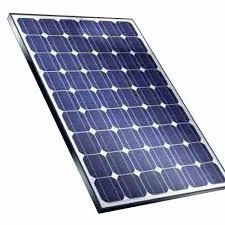solar inverter string design calculations
Solar Inverter String Design Calculations An Overview
As the world shifts towards renewable energy sources, solar power has become a paramount player in the energy landscape. One of the critical components of a solar power system is the inverter, which converts the direct current (DC) electricity generated by solar panels into alternating current (AC) electricity that can be used by household appliances and fed into the grid. A vital aspect of optimizing solar power systems is the string design calculations for inverters. This article provides an overview of the key considerations involved.
Understanding Inverter String Design
Inverter string design involves determining the optimal arrangement of solar panels in series (strings) that will connect to the inverter
. This design is influenced by multiple factors, including the electrical characteristics of the solar panels, the specifications of the inverter, shading effects, and environmental factors.Each solar panel has a specified voltage and current rating, typically measured under standard test conditions (STC). When panels are wired in series, their voltages add up while the current remains the same. Conversely, when panels are connected in parallel, the current increases while the voltage stays constant. Therefore, understanding how to arrange the panels is critical in maximizing power generation and ensuring compatibility with the inverter.
Key Calculations in String Design
1. Voltage Calculation The first step is to calculate the total voltage of the string. This can be done by multiplying the voltage of a single panel by the number of panels in series. It’s important to ensure that the total voltage does not exceed the maximum input voltage rating of the inverter—this is especially crucial to avoid damage during high temperature conditions, which can raise the output voltage.
solar inverter string design calculations

2. Current Calculation The current flowing through the string is equal to the current rating of one solar panel, provided that all panels in the string are matched in specifications. The inverter should also have a sufficient current rating to handle the output from the string without being overloaded.
3. Temperature Coefficient Considerations The performance of solar panels is affected by temperature. Typically, as the temperature increases, the voltage output decreases. The temperature coefficient, provided by the manufacturer, allows for adjustments to be made in the design to ensure that the system operates effectively under varying environmental conditions.
4. Shading Issues Shading can significantly impact the performance of solar panels. When data about potential shading from nearby objects (trees, buildings, etc.) is gathered, it’s essential to design strings to minimize this effect. For example, if shading is expected on certain panels, strategies such as connecting panels with less shading in separate strings can be implemented.
5. Mismatch Loss Mitigation Using solar panels with similar electrical characteristics can greatly reduce energy losses due to mismatching. It is advisable to avoid mixing older and newer panels, as well as panels from different manufacturers, within the same string.
Conclusion
In summary, solar inverter string design calculations are vital for the efficient operation of solar power systems. By conducting thorough calculations related to voltage, current, and factors like shading and temperature, engineers and installers can create systems that are both efficient and resilient. As solar technology continues to evolve, adhering to best practices in string design will help maximize energy harvest and ensure the long-term viability of solar power as a green energy source.
-
String Solar Inverter: The High-Efficiency Solution for Smart Solar EnergyNewsJul.14,2025
-
Revolutionizing Rooftop Energy with the Power of the Micro Solar InverterNewsJul.14,2025
-
Power Independence with Smart Off Grid Solar Inverter SolutionsNewsJul.14,2025
-
On Grid Solar Inverter: Powering the Future with Smart Grid IntegrationNewsJul.14,2025
-
Monocrystalline Solar Panels: High-Efficiency Power for the Future of Clean EnergyNewsJul.14,2025
-
Bifacial Solar Panel: A Smarter Investment for Next-Generation Energy SystemsNewsJul.14,2025







